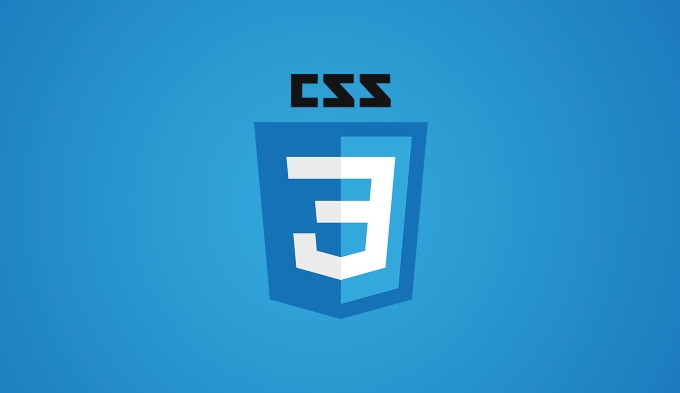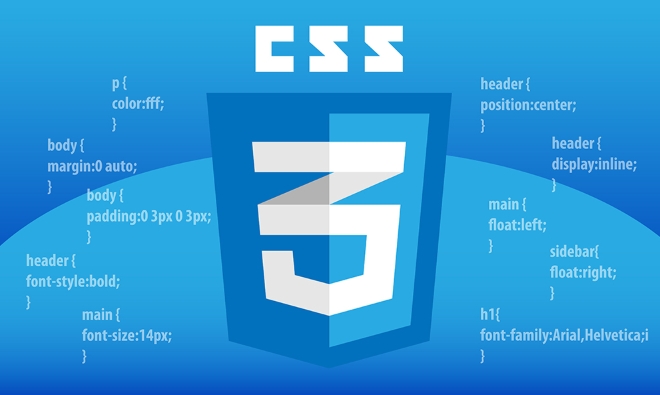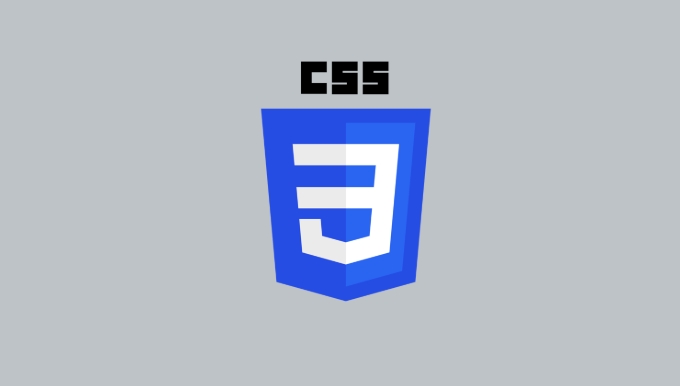CurrentColor is a practical keyword in CSS that references the current text color of an element as the value of other attributes. It makes the code more concise and maintains style consistency by avoiding duplicate color values. Common uses include: 1. SVG icon fill and stroke; 2. Borders matching text color; 3. Background consistent with text color; 4. Link underline or focus outline. It works by directly inheriting the color attribute value of the element and searching up with the DOM tree until the color definition is found. When using it, you should pay attention to: 1. Complex multi-level components may cause color dependence chaos; 2. It is not suitable to use it when strictly distinguishing text and interface colors; 3. Old browsers such as IE11 have limited support. Overall, currentColor is a safe and efficient solution for projects that do not require deep compatibility with old environments.

The currentColor keyword in CSS is a neighbor little feature that lets you use the current text color as a value for other properties, like borders or backgrounds. It might not be something you use every day, but once you understand how it works, it can save you from repeating color values and help keep your styles more consistent.

Why Use currentColor?
Instead of hardcoding colors everywhere — like setting both text and border to #333 — you can set the color once on an element (via the color property), and then use currentColor anywhere else you want that same shade. This makes your code cleaner and easier to maintain.
For example:

.box {
color: #333;
border: 1px solid currentColor;
} Now the border will always match whatever color is set to, even if you change it later or apply different themes.
Where Does It Come In Handy?
You'll find currentColor especially useful when styling icons, buttons, or any component where multiple parts should share the same color. Since it inherits from the color property, it behaves just like normal text color inheritance.

Some common places to use it:
- SVG icon fills and strokes
- Border colors that match text
- Backgrounds that need to align with text color
- Link underlines or focus outlines
This keeps things DRY (Don't Repeat Yourself) and avoids mismatches when themes change.
How Does It Actually Work?
It's pretty straightforward: currentColor uses whatever the computed color value is for that element. If there's no color explicitly set, it looks up the DOM tree until it finds one — just like normal inheritance.
One thing to note: some tools or older browsers might not fully support it, but modern browsers have good coverage. So if you're working on a project that doesn't require deep legacy browser support, feel free to use it.
Also, since it relies on the color property, changing color dynamically (like with hover states or themes) automatically updates anything using currentColor .
When Should You Avoid It?
There are only a few cases where currentColor might not be the best idea:
- If you're dealing with complex multi-layered components where color dependencies could get confusing
- In projects where strict separation between text and UI colors is needed
- If you're supporting very old browsers like IE11 (though polyfills exist)
Otherwise, it's safe and practical.
That's basically all there is to it — currentColor is simple, powerful, and often overlooked. Once you start using it, you'll probably find yourself reaching for it more often than you'd expect.
The above is the detailed content of What is the currentColor keyword in CSS?. For more information, please follow other related articles on the PHP Chinese website!

Hot AI Tools

Undress AI Tool
Undress images for free

Undresser.AI Undress
AI-powered app for creating realistic nude photos

AI Clothes Remover
Online AI tool for removing clothes from photos.

Clothoff.io
AI clothes remover

Video Face Swap
Swap faces in any video effortlessly with our completely free AI face swap tool!

Hot Article

Hot Tools

Notepad++7.3.1
Easy-to-use and free code editor

SublimeText3 Chinese version
Chinese version, very easy to use

Zend Studio 13.0.1
Powerful PHP integrated development environment

Dreamweaver CS6
Visual web development tools

SublimeText3 Mac version
God-level code editing software (SublimeText3)
 CSS tutorial for creating loading spinners and animations
Jul 07, 2025 am 12:07 AM
CSS tutorial for creating loading spinners and animations
Jul 07, 2025 am 12:07 AM
There are three ways to create a CSS loading rotator: 1. Use the basic rotator of borders to achieve simple animation through HTML and CSS; 2. Use a custom rotator of multiple points to achieve the jump effect through different delay times; 3. Add a rotator in the button and switch classes through JavaScript to display the loading status. Each approach emphasizes the importance of design details such as color, size, accessibility and performance optimization to enhance the user experience.
 Addressing CSS Browser Compatibility issues and prefixes
Jul 07, 2025 am 01:44 AM
Addressing CSS Browser Compatibility issues and prefixes
Jul 07, 2025 am 01:44 AM
To deal with CSS browser compatibility and prefix issues, you need to understand the differences in browser support and use vendor prefixes reasonably. 1. Understand common problems such as Flexbox and Grid support, position:sticky invalid, and animation performance is different; 2. Check CanIuse confirmation feature support status; 3. Correctly use -webkit-, -moz-, -ms-, -o- and other manufacturer prefixes; 4. It is recommended to use Autoprefixer to automatically add prefixes; 5. Install PostCSS and configure browserslist to specify the target browser; 6. Automatically handle compatibility during construction; 7. Modernizr detection features can be used for old projects; 8. No need to pursue consistency of all browsers,
 Creating custom shapes with css clip-path
Jul 09, 2025 am 01:29 AM
Creating custom shapes with css clip-path
Jul 09, 2025 am 01:29 AM
Use the clip-path attribute of CSS to crop elements into custom shapes, such as triangles, circular notches, polygons, etc., without relying on pictures or SVGs. Its advantages include: 1. Supports a variety of basic shapes such as circle, ellipse, polygon, etc.; 2. Responsive adjustment and adaptable to mobile terminals; 3. Easy to animation, and can be combined with hover or JavaScript to achieve dynamic effects; 4. It does not affect the layout flow, and only crops the display area. Common usages are such as circular clip-path:circle (50pxatcenter) and triangle clip-path:polygon (50%0%, 100 0%, 0 0%). Notice
 What is the difference between display: inline, display: block, and display: inline-block?
Jul 11, 2025 am 03:25 AM
What is the difference between display: inline, display: block, and display: inline-block?
Jul 11, 2025 am 03:25 AM
Themaindifferencesbetweendisplay:inline,block,andinline-blockinHTML/CSSarelayoutbehavior,spaceusage,andstylingcontrol.1.Inlineelementsflowwithtext,don’tstartonnewlines,ignorewidth/height,andonlyapplyhorizontalpadding/margins—idealforinlinetextstyling
 Styling visited links differently with CSS
Jul 11, 2025 am 03:26 AM
Styling visited links differently with CSS
Jul 11, 2025 am 03:26 AM
Setting the style of links you have visited can improve the user experience, especially in content-intensive websites to help users navigate better. 1. Use CSS's: visited pseudo-class to define the style of the visited link, such as color changes; 2. Note that the browser only allows modification of some attributes due to privacy restrictions; 3. The color selection should be coordinated with the overall style to avoid abruptness; 4. The mobile terminal may not display this effect, and it is recommended to combine it with other visual prompts such as icon auxiliary logos.
 How to create responsive images using CSS?
Jul 15, 2025 am 01:10 AM
How to create responsive images using CSS?
Jul 15, 2025 am 01:10 AM
To create responsive images using CSS, it can be mainly achieved through the following methods: 1. Use max-width:100% and height:auto to allow the image to adapt to the container width while maintaining the proportion; 2. Use HTML's srcset and sizes attributes to intelligently load the image sources adapted to different screens; 3. Use object-fit and object-position to control image cropping and focus display. Together, these methods ensure that the images are presented clearly and beautifully on different devices.
 What are common CSS browser inconsistencies?
Jul 26, 2025 am 07:04 AM
What are common CSS browser inconsistencies?
Jul 26, 2025 am 07:04 AM
Different browsers have differences in CSS parsing, resulting in inconsistent display effects, mainly including the default style difference, box model calculation method, Flexbox and Grid layout support level, and inconsistent behavior of certain CSS attributes. 1. The default style processing is inconsistent. The solution is to use CSSReset or Normalize.css to unify the initial style; 2. The box model calculation method of the old version of IE is different. It is recommended to use box-sizing:border-box in a unified manner; 3. Flexbox and Grid perform differently in edge cases or in old versions. More tests and use Autoprefixer; 4. Some CSS attribute behaviors are inconsistent. CanIuse must be consulted and downgraded.
 Demystifying CSS Units: px, em, rem, vw, vh comparisons
Jul 08, 2025 am 02:16 AM
Demystifying CSS Units: px, em, rem, vw, vh comparisons
Jul 08, 2025 am 02:16 AM
The choice of CSS units depends on design requirements and responsive requirements. 1.px is used for fixed size, suitable for precise control but lack of elasticity; 2.em is a relative unit, which is easily caused by the influence of the parent element, while rem is more stable based on the root element and is suitable for global scaling; 3.vw/vh is based on the viewport size, suitable for responsive design, but attention should be paid to the performance under extreme screens; 4. When choosing, it should be determined based on whether responsive adjustments, element hierarchy relationships and viewport dependence. Reasonable use can improve layout flexibility and maintenance.






